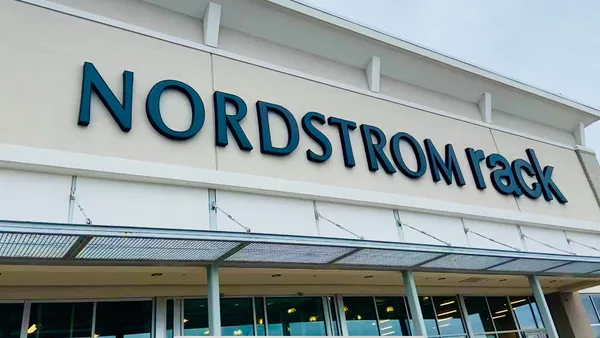Dive Brief:
- Levi's net sales increased 5% year over year to $1.3 billion in its second fiscal quarter (which ended May 26), the company reported Tuesday.
- The denim brand reported that revenue was up in all major regions it sells in, with 3% growth in the Americas (where it made $693 million in revenue), 9% growth in Europe and 6% growth in Asia.
- Levi's operating income was down 19% as planned advertising and promotion costs offset windfalls from increased sales. Net income fell 63% year over year to $28.5 million, mostly due to expenses related to the brand's initial public offering this year. The company paid $24.9 million in underwriting commissions plus another $3.5 million unspecified additional costs related to the IPO.
Dive Insight:
The heart of Levi's business did well in Q2, with sales of men's bottoms — the company's biggest business — up 5%, CEO Chip Bergh told analysts Tuesday, according to a Seeking Alpha transcript.
But the brand also wants to diversify. Bergh added that Levi's plans to expand more into tops and women's categories, as well as under-penetrated markets. "While we've made good progress, the future growth opportunity in these areas remain significant," he said, noting that the company's womenswear business grew 16% in Q2 and has grown in double digits for the past 10 quarters.
Analysts with Morgan Stanley said in an emailed client note Wednesday that Levi's is underpenetrated in women's and tops, "which we view as key to the company's ongoing transformation into a lifestyle business."
Levi's also aims to become a "leading world-class omnichannel retailer," Bergh said. During Q2, the company's direct-to-consumer business, which includes both physical stores and websites, grew 14%, marking the 13th straight quarter of double-digit growth. Of that, e-commerce sales grew 25% and sales at Levi's brick-and-mortar stores grew 12%.
As it chases sales growth, the brand is also looking to boost profits, including through its technological capabilities. Bergh told analysts that products comprising 25% of its denim bottoms business are finished with lasers instead of by hand, which he expects to rise to 50% by 2021. The technique is expected to boost profit while also bringing benefits to Levi's supply chain and inventory.
The company is also looking to use technology to customize jeans, with the goal of allowing customers to design their own jeans and receive them days later, Bergh said.













